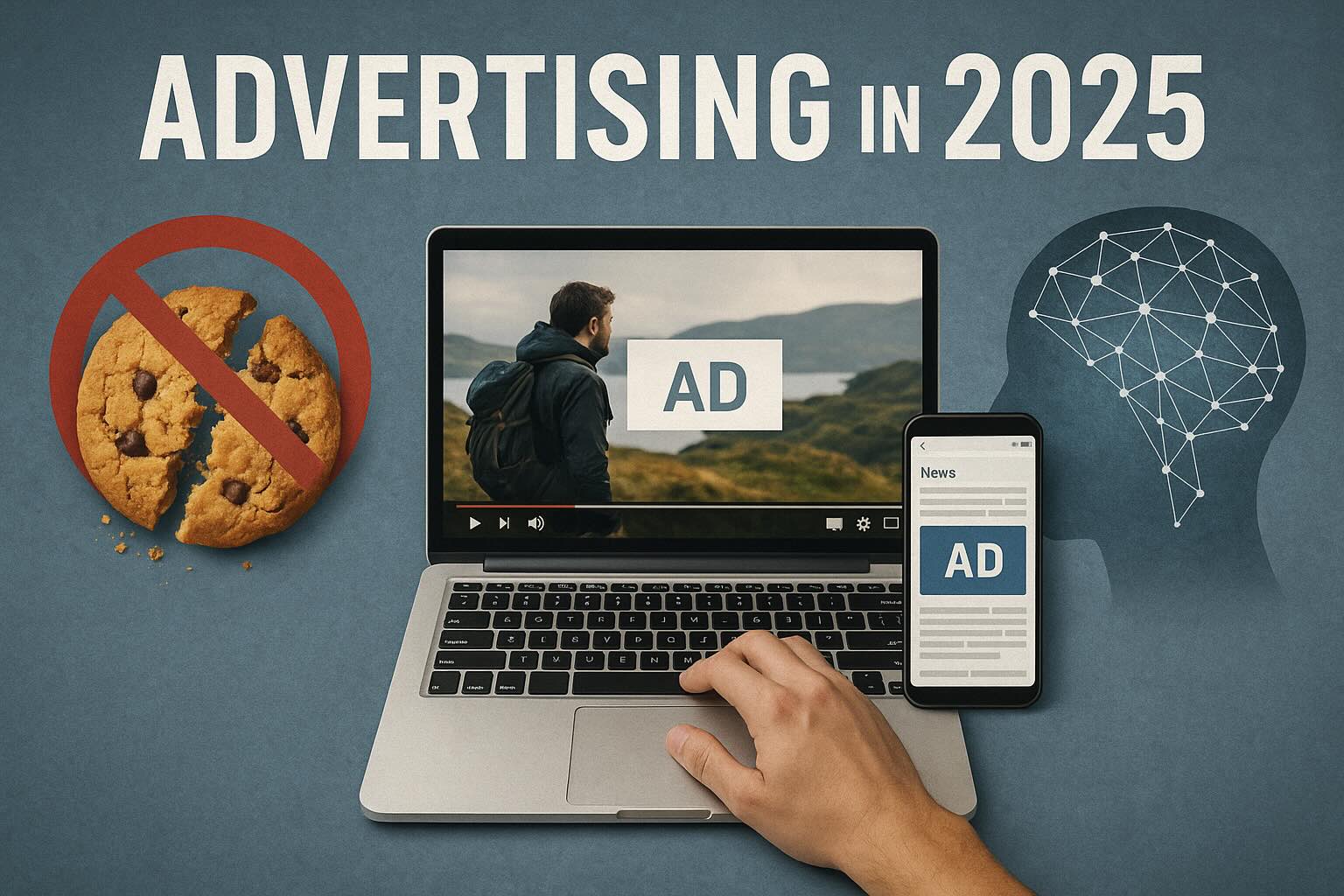
Introduction: A Pivotal Year for Advertising
In 2025, the digital advertising industry finds itself at a crossroads. Google’s long-promised phaseout of third-party cookies is finally underway, Apple’s App Tracking Transparency (ATT) framework has tightened, and consumer awareness of privacy issues has never been higher.
For advertisers, this means one thing: identity-based targeting is losing its dominance. But far from spelling doom for digital campaigns, it has opened the door to a technology that’s both old and radically new—contextual targeting. Powered by AI and fueled by rich multimedia analysis, contextual targeting is enabling advertisers to reach audiences based not on who they are, but on what they’re engaging with right now.
Why Cookies Are Disappearing
Cookies have been the backbone of targeted advertising for over two decades. But three forces have eroded their utility:
- Regulation — GDPR in Europe, CCPA in California, and similar laws worldwide restrict personal data collection.
- Platform Policies — Apple’s iOS changes cut off much mobile tracking; Google is deprecating cookies in Chrome, affecting over 65% of global browser traffic (StatCounter).
- Consumer Sentiment — Surveys show most users dislike being “followed” online and see behavioral ads as invasive.
The result: advertisers are looking for targeting methods that work without identity tracking—and contextual targeting has reemerged, supercharged by AI.
What Is Contextual Targeting in 2025?
In its early days, contextual targeting meant placing a sneaker ad on a running blog. Today, it’s far more sophisticated. AI-powered contextual engines can analyze:
- Video frames for objects, logos, and environments (computer vision)
- Audio tracks for topics, sentiment, and language
- Transcripts and metadata for semantic meaning (natural language processing)
This multimodal approach allows for granular alignment between ad creative and the moment of content consumption, whether on a smartphone app, CTV stream, or VR headset.
CTV: Contextual Targeting at the Big Screen Scale
CTV is the poster child for modern contextual targeting. With $33.48B in U.S. spend projected for 2025 and 90%+ programmatic transactions (Basis Technologies), it’s a massive opportunity.
Example: LG Ad Solutions’ integration with Viant enables advertisers to buy across 45M LG TVs with privacy-safe household IDs (TV Technology). Paired with content metadata from IRIS.TV, brands can target ads to relevant shows or genres without needing user-level data.
Samsung Ads’ Creative Canvas goes further, making CTV ads interactive with QR codes and dynamic creative elements that respond to on-screen content (TV Technology).
In-App: The Always-On Context Engine
Mobile apps offer constant engagement, but privacy changes like ATT have made user tracking difficult. Contextual targeting solves this by analyzing in-app content—game environments, article topics, or video themes—and matching relevant ads dynamically.
According to Seedtag, brands using AI-powered contextual targeting have seen up to 30% higher engagement rates compared to traditional demographic targeting (Seedtag).
Emerging Media: Context at the Edge
Beyond CTV and mobile apps, contextual targeting is gaining traction in digital out-of-home (DOOH), audio streaming, and AR/VR. Programmatic DOOH contextual spend is projected to grow 14% YoY through 2027 (Statista).
The Benefits Driving Adoption
- Privacy-first compliance: No PII collection or user tracking.
- Improved relevance: Ads match the content’s mood, topic, and visual cues.
- Brand safety: AI filters avoid unsafe or unsuitable content environments.
Challenges and Best Practices
- Misclassification risk: AI can misinterpret tone or imagery—human review helps.
- Over-reliance on context: Combine with first-party data for best results.
- Transparency: Demand clear reporting on how content is classified and matched.
Future Trends: Where Contextual Goes Next
Expect AI to not just select placement, but also generate creative in real time, adapting imagery and messaging to fit the exact context. The convergence of contextual targeting and shoppable ads will make it possible to turn any viewing moment into a potential purchase opportunity.
Conclusion & Takeaway
The death of cookies isn’t the end of targeted advertising—it’s the start of a smarter, safer, and more relevant era. By embracing AI-powered contextual targeting, advertisers can maintain precision, respect privacy, and unlock performance gains across every screen.



